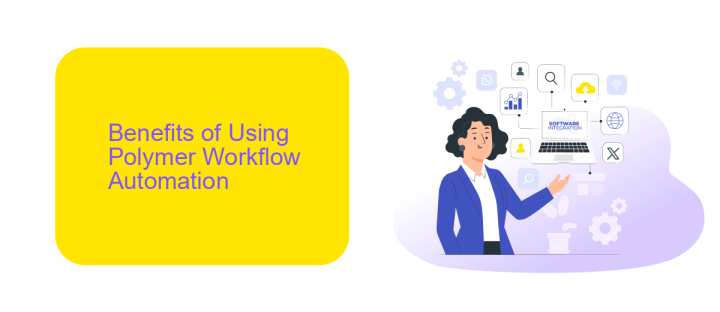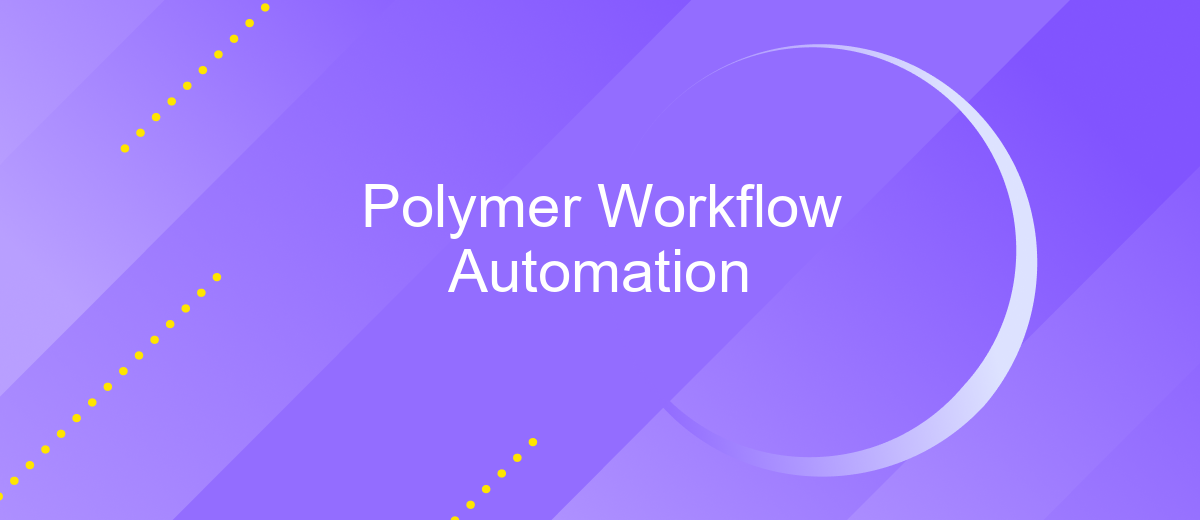Polymer Workflow Automation
Polymer workflow automation is revolutionizing the manufacturing and production industries by streamlining processes, reducing human error, and increasing efficiency. This article explores the latest advancements in polymer automation technologies, their applications, and the significant benefits they offer. From automated material handling to precision molding, discover how these innovations are transforming traditional workflows and paving the way for smarter, more sustainable production practices.
Introduction to Polymer Workflow Automation
Polymer Workflow Automation is a cutting-edge approach that streamlines the development and deployment of polymer-based applications. By automating repetitive tasks, developers can focus on more complex aspects of their projects, enhancing productivity and reducing human error.
- Automated testing and quality assurance
- Continuous integration and deployment
- Real-time monitoring and analytics
- Seamless integration with third-party services
One of the key advantages of Polymer Workflow Automation is its ability to integrate with various services to enhance functionality. Tools like ApiX-Drive facilitate seamless integration, enabling developers to connect different APIs without extensive coding. This ensures that the workflow remains efficient and adaptable to changing project requirements. By leveraging these automation tools, teams can achieve faster development cycles, improved application performance, and a more streamlined workflow.
Benefits of Using Polymer Workflow Automation

Implementing Polymer Workflow Automation brings a multitude of benefits to organizations, enhancing both efficiency and productivity. One of the primary advantages is the significant reduction in manual tasks, allowing employees to focus on more strategic activities. This automation streamlines complex processes, ensuring consistency and minimizing errors, which ultimately leads to higher quality outcomes. Additionally, Polymer Workflow Automation offers real-time monitoring and analytics, providing valuable insights that help in making data-driven decisions and optimizing workflows continuously.
Another key benefit is the seamless integration with various tools and services, such as ApiX-Drive, which simplifies the process of connecting different applications. ApiX-Drive enables effortless data transfer between platforms, ensuring that information flows smoothly across the organization. This integration capability not only saves time but also reduces the risk of data silos and enhances collaboration among teams. By leveraging Polymer Workflow Automation, businesses can achieve greater agility, adaptability, and scalability, positioning themselves for sustained growth and success in a competitive market.
Key Features of Polymer Workflow Automation

Polymer Workflow Automation streamlines the process of managing and optimizing polymer production and development. It offers a range of features designed to enhance efficiency, ensure consistency, and reduce manual intervention.
- Automated Task Management: Automate repetitive tasks to save time and reduce the likelihood of human error.
- Real-time Monitoring: Track production metrics and performance in real-time to make informed decisions quickly.
- Integration Capabilities: Seamlessly integrate with various tools and platforms using services like ApiX-Drive, which simplifies the setup of data flows between different systems.
- Customizable Workflows: Tailor workflows to meet specific production requirements and adapt to changing needs.
- Data Analytics: Leverage advanced analytics to gain insights into production processes and identify areas for improvement.
By leveraging these key features, Polymer Workflow Automation significantly enhances the efficiency and reliability of polymer production processes. This not only leads to higher quality products but also contributes to overall operational excellence.
How to Implement Polymer Workflow Automation

Implementing Polymer workflow automation can significantly enhance productivity and streamline operations. To get started, you need to identify the specific tasks and processes within your workflow that can be automated. This includes repetitive tasks, data entry, and communication between different systems.
Next, choose the right tools and platforms that support Polymer workflow automation. ApiX-Drive is a valuable service that facilitates seamless integration between various applications, making it easier to automate workflows without extensive coding knowledge. By connecting different systems, ApiX-Drive ensures that data flows smoothly across your workflow.
- Identify tasks for automation
- Select suitable automation tools like ApiX-Drive
- Integrate applications and systems
- Test and monitor the automated workflow
After setting up the automation, it is crucial to monitor its performance and make necessary adjustments. Regularly reviewing the automated processes ensures they continue to meet your workflow needs efficiently. By leveraging tools like ApiX-Drive, you can keep your Polymer workflow running smoothly and focus on more strategic tasks.
Best Practices for Polymer Workflow Automation
Effective Polymer workflow automation requires a structured approach to ensure seamless integration and optimal performance. First, establish a clear workflow map that outlines each step in the polymer production process. This helps identify potential bottlenecks and areas where automation can be most beneficial. Utilize tools like ApiX-Drive to automate data transfer between different systems, ensuring real-time updates and reducing manual errors. Regularly review and update the workflow map to adapt to any changes in production requirements or technological advancements.
Another best practice is to implement robust monitoring and maintenance protocols. Automated systems should be equipped with sensors and software that continuously monitor performance metrics, such as temperature, pressure, and chemical composition. Immediate alerts for any deviations from the norm can prevent costly downtimes. Additionally, schedule regular maintenance checks to ensure all automated components are functioning correctly. Training staff to understand and manage these automated systems is also crucial for long-term success. By following these practices, you can maximize efficiency and maintain high-quality standards in polymer production.
FAQ
What is Polymer Workflow Automation?
How can Polymer Workflow Automation benefit my production process?
What types of tasks can be automated in polymer production?
How do I integrate automation into my existing polymer production workflow?
Is it difficult to set up Polymer Workflow Automation?
Apix-Drive is a simple and efficient system connector that will help you automate routine tasks and optimize business processes. You can save time and money, direct these resources to more important purposes. Test ApiX-Drive and make sure that this tool will relieve your employees and after 5 minutes of settings your business will start working faster.

